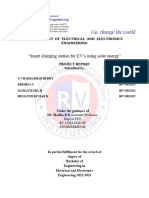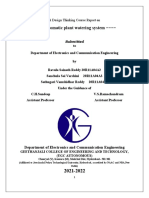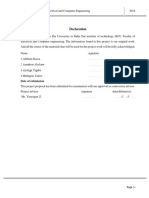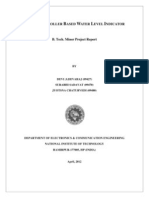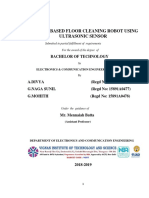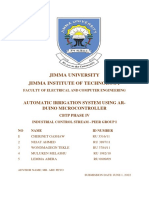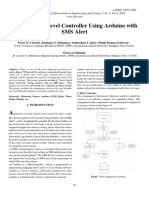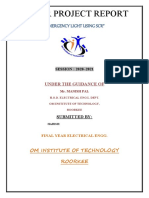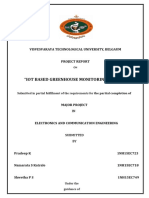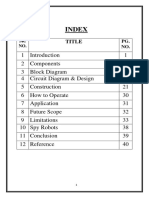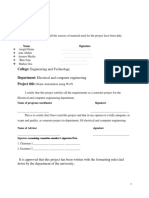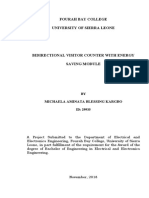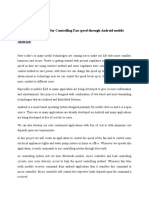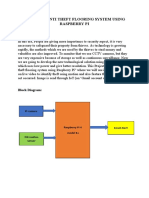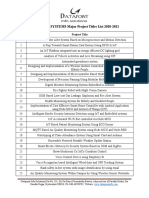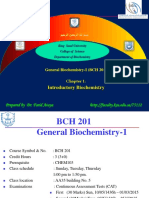0% found this document useful (0 votes)
823 views13 pagesArduino Based Solar Powered Automatic Handwash System
This document describes an Arduino-based solar powered automatic hand wash system created by Ani Isabelle L. Sibal. The system aims to prevent the spread of diseases like COVID-19 by eliminating direct contact with taps and surfaces. It uses an Arduino board powered by a solar panel and battery to control a solenoid valve and automatically dispense water and soap when hands are placed under the basin. The document discusses the materials used, programming of the Arduino, testing procedures, and findings which showed the system was effective in reducing bacteria and preventing transmission of viruses through direct contact.
Uploaded by
Ani SibalCopyright
© © All Rights Reserved
We take content rights seriously. If you suspect this is your content, claim it here.
Available Formats
Download as DOCX, PDF, TXT or read online on Scribd
0% found this document useful (0 votes)
823 views13 pagesArduino Based Solar Powered Automatic Handwash System
This document describes an Arduino-based solar powered automatic hand wash system created by Ani Isabelle L. Sibal. The system aims to prevent the spread of diseases like COVID-19 by eliminating direct contact with taps and surfaces. It uses an Arduino board powered by a solar panel and battery to control a solenoid valve and automatically dispense water and soap when hands are placed under the basin. The document discusses the materials used, programming of the Arduino, testing procedures, and findings which showed the system was effective in reducing bacteria and preventing transmission of viruses through direct contact.
Uploaded by
Ani SibalCopyright
© © All Rights Reserved
We take content rights seriously. If you suspect this is your content, claim it here.
Available Formats
Download as DOCX, PDF, TXT or read online on Scribd
/ 13




